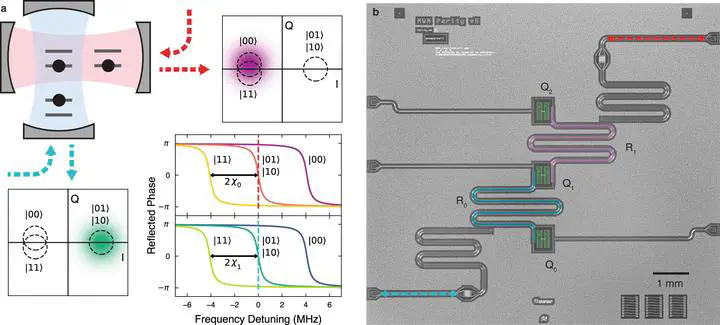
Abstract
The storage and processing of quantum information are susceptible to external noise, resulting in computational errors. A powerful method to suppress these effects is quantum error correction. Typically, quantum error correction is executed in discrete rounds, using entangling gates and projective measurement on ancillary qubits to complete each round of error correction. Here we use direct parity measurements to implement a continuous quantum bit-flip correction code in a resource-efficient manner, eliminating entangling gates, ancillary qubits, and their associated errors. An FPGA controller actively corrects errors as they are detected, achieving an average bit-flip detection efficiency of up to 91%. Furthermore, the protocol increases the relaxation time of the protected logical qubit by a factor of 2.7 over the relaxation times of the bare comprising qubits. Our results showcase resource-efficient stabilizer measurements in a multi-qubit architecture and demonstrate how continuous error correction codes can address challenges in realizing a fault-tolerant system.